Field Review: Nauticam NA-D500 housing
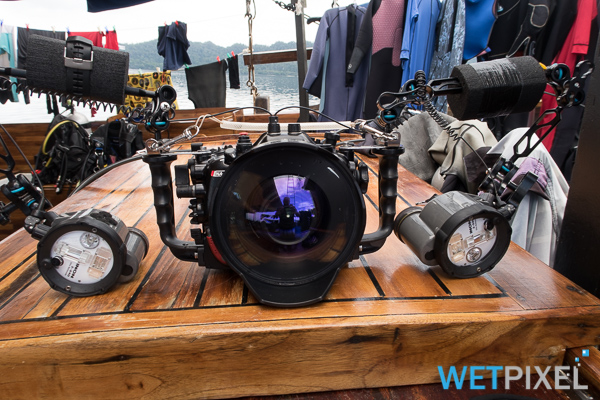
Field Review: Nauticam NA-D500 housing
Introduction
In planning to carry out a review of Nikon’s D500, it seemed like a good opportunity to also review some of the new housings that had been designed for it. I had planned to dive both the Nauticam and Aquatica housings in Indonesia, but due to UK customs being intransigent, was only able to dive Nauticam’s NA-D500 on the trip. Thanks and kudos are due to Ryan Canon, Edward Lai and Phoebe Lu of Nauticam and Blake Stoughton and Carolina of Aquatica.
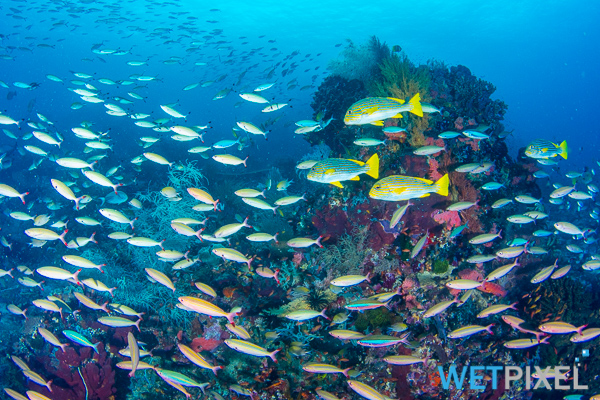
Hence, this is not a comparative review, but is an idea of the features that I liked about this housing and some of the things that I found less satisfactory. It should not be taken as a guide to housing selection per se, but more as a general guide to salient features.
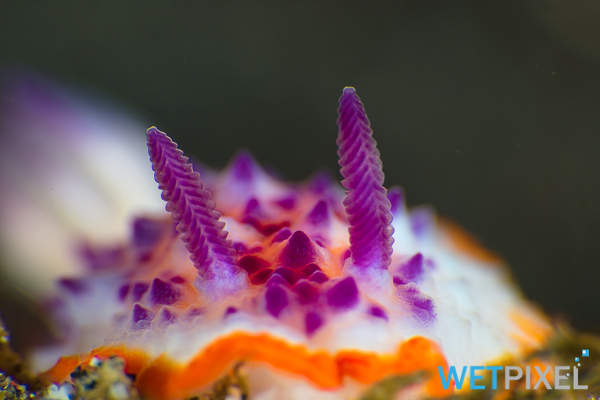
The housing has been used continuously for over a month in Indonesia, shooting both wide angle and macro and since then I have also been able to use the housing with dry gloves in the UK’s more temperate conditions. Wetpixel Associate Editor Alex Mustard was also able to use the housing a little and he adds a précis of his thoughts to this review too.
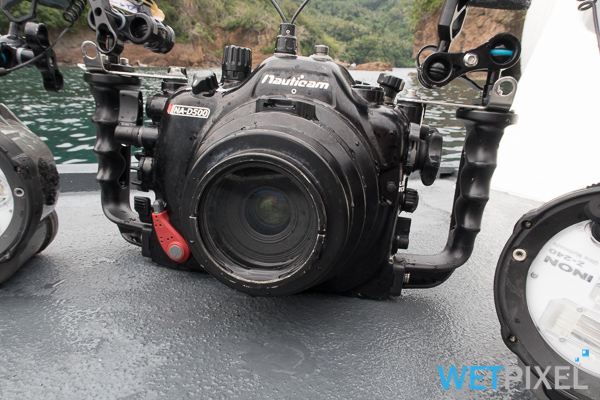
In use
Nauticam have a well earned reputation for listening to their customers and implementing changes based on this feedback. Previous housings have had an issue when diving in black sand muck diving areas as the sand clogs the housing latches, meaning that they do not lock closed.
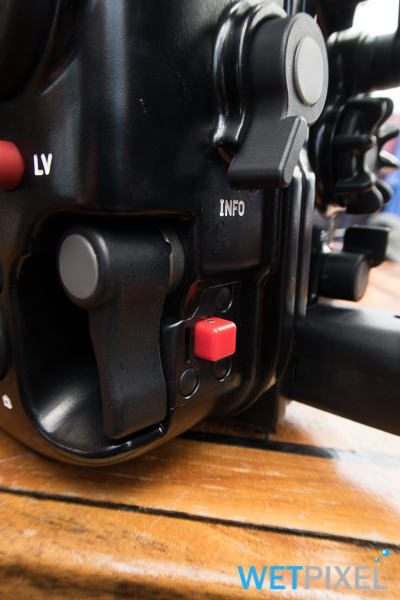
I was told that the design had been modified to address this and can happily report that on the Wetpixel/Alex Mustard Lembeh Workshop this year, there were no instances of this occurring. Specifically with the D500 housing, despite my best efforts to get them to jam, they stubbornly resisted and worked absolutely smoothly for all 18 days and 59 dives that I was muck diving.
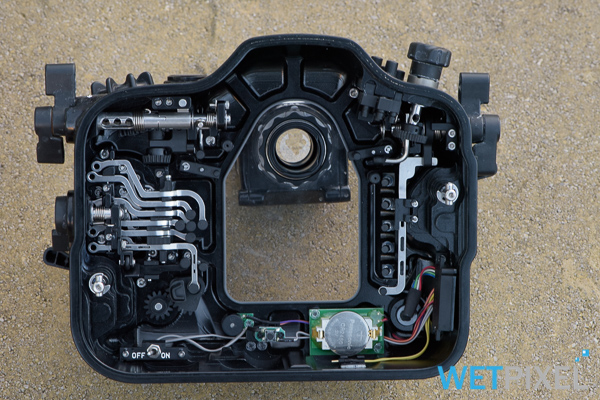
Nauticam’s design philosophy is to provide access to as many of the camera controls as possible. Given that all cameras have a large number of these, this inevitably leads to a fairly complex internal arrangement. This has led to some concerns about how robust these controls are. My general experience with the housings that I have used and those of fellow travellers suggests that these fears are unfounded and that Nauticam’s housings are as reliable as almost all other brands.
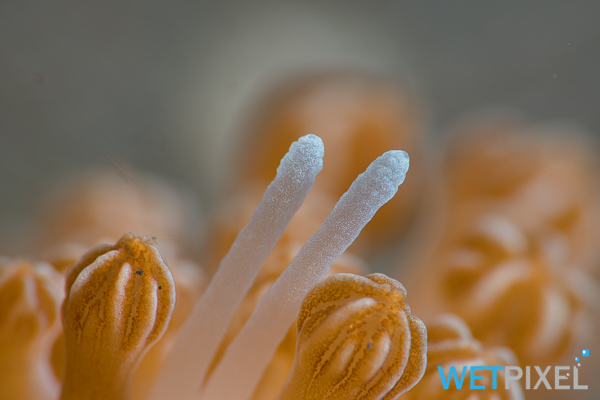
In this instance, I received the camera in Jakarta airport and the housing and 45° viewfinder in the harbour when I boarded the Damai 1. I brought the ports with me from the UK, along with strobes, arms and fiber optic cables. It is a tribute to the manufacturer that it all fitted together seamlessly and was in the water shooting images within 2 hours of my getting hold of the housing.
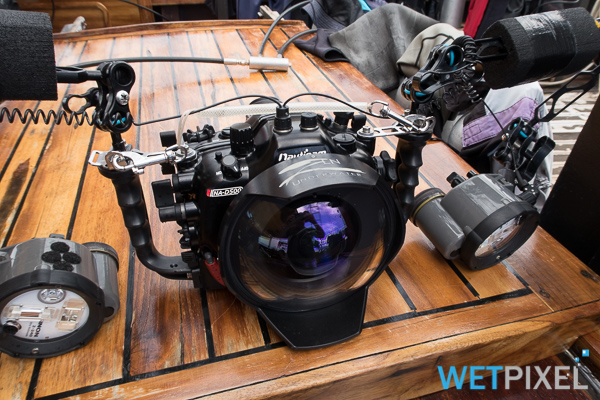
From then until today, it has required no adjustment or tuning. It simply works!
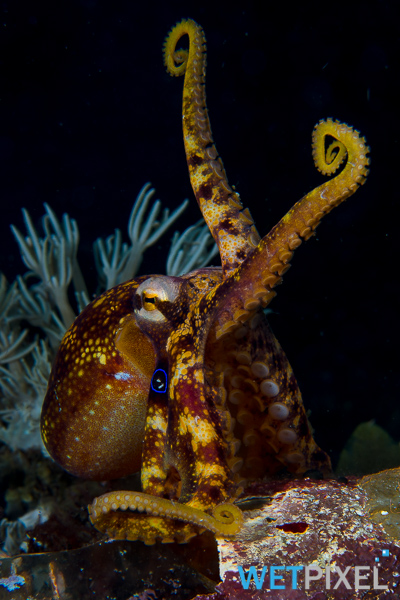
Underwater handling
Nauticam supplies the housing with stainless steel brackets that link the housing to the tops of the handles. This makes for a very solid feeling as there is practically no vibration in the handles.
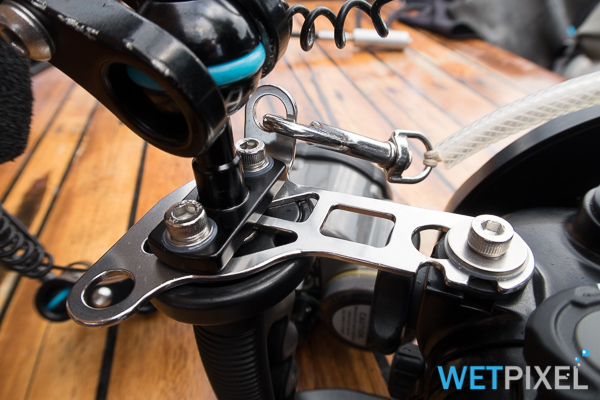
Strobe mounting balls are located on the tops of the handles. The brackets ensure that this is very stable, but I personally prefer that the strobes are mounted onto the housing body. I will often remove handles for shooting verticals and this requires that the strobes are mounted on the housing itself.
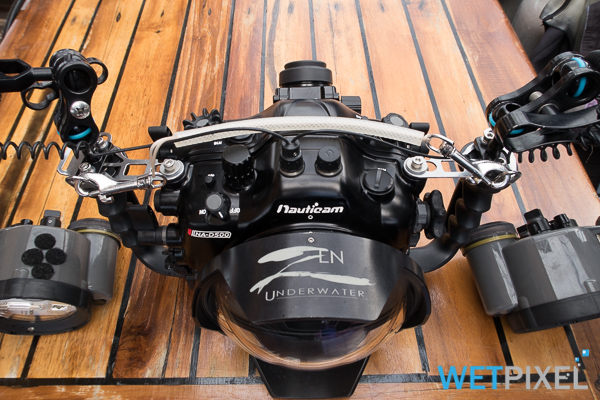
Nauticam do have balls that can be attached into the holes in the housing where the brackets are located and these would be my preference.
The housing is quite small and hence tends to be quite negative. With a 60mm macro port at two Inon Z240 strobes, it needs 5 Stix floats to be neutral (and 6 are slightly buoyant, but that is another story that I will tell at another time!) With a 170mm (7”) dome and a Tokina 10-17mm, only 4 are required.
- Introduction and underwater handling.
- Camera controls and Nauticam Vacuum system.
- Nauticam electro optical converter, Alex Mustard’s comments and conclusion.